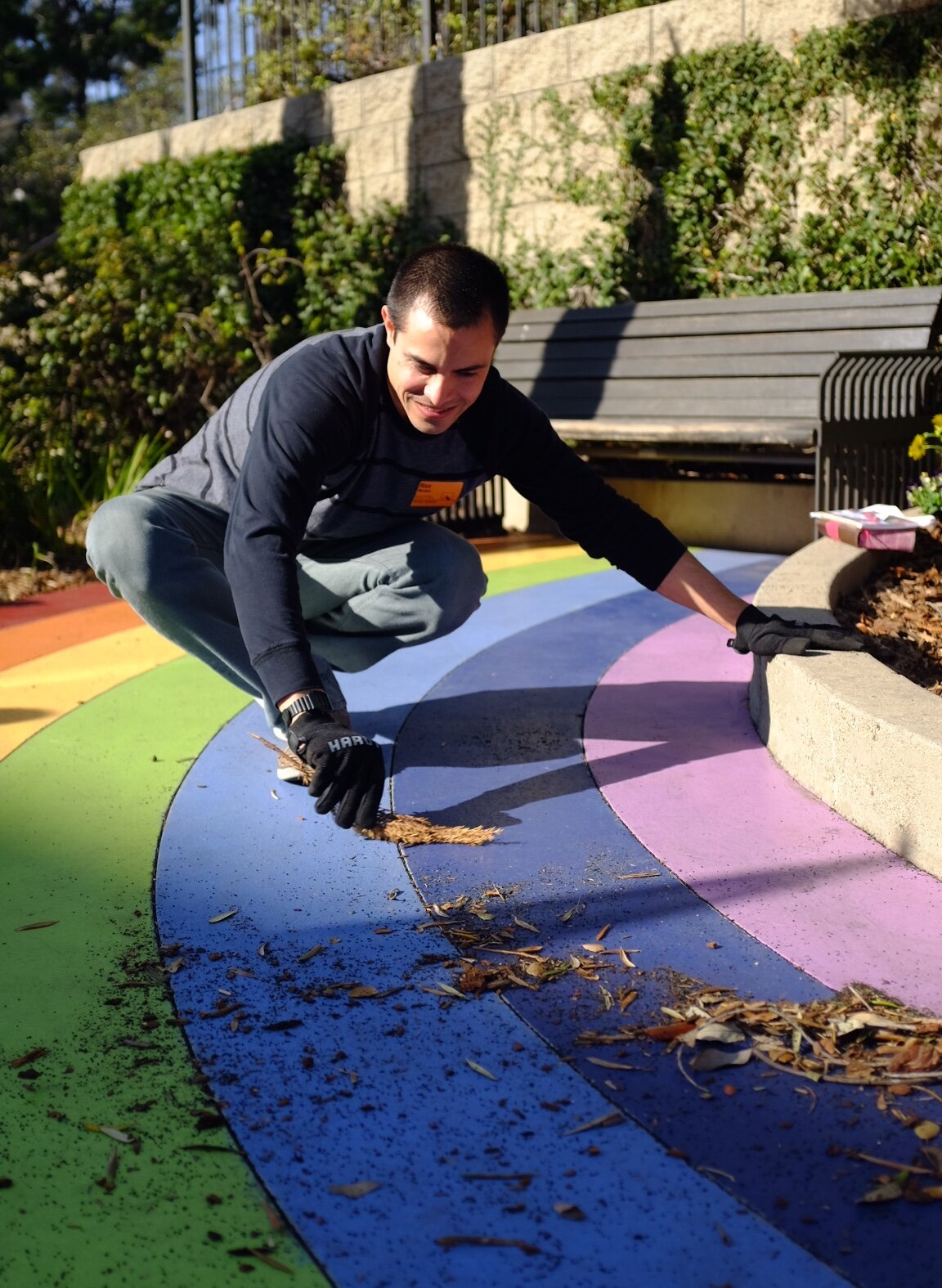Project Breakdown: Christian School Promotional Video
Discover how our passions pushed us to go the extra mile in this promotional video project breakdown.
"If we do it for one, then we’ll have to do it for everyone."
This is a statement that has killed millions of kind, generous, and creative ideas over the years.
This very thought could be the reason why we haven’t taken our favorite co-worker out for a special lunch or why we didn’t hand the homeless man a delicious meal when we passed by.
I’m not sure what it is - a desire for justice and equality or faulty wiring in our brains (probably a combo of both), but so often we have a thought, quickly run it through an equation in our head and if it won’t work for everything or everyone we toss it out.
I’ll never forget many years ago when I heard Andy Stanley say “Do for one what you wish you could do for all.”
He went on to tell a life changing story of how his family chose to help one individual person for over a decade and the impact it made was astounding.
He then reminded us of how Jesus didn’t play favorites, but he also didn’t let that stop him from having special, non-repeatable encounters with individuals on the regular, even if that meant other people would get jealous or feel left out.
I’ve been thinking about this concept lately and how I can integrate it into all areas of my life and for the purpose of this post, how it can bring new life and personal satisfaction into my productions.
The other week I was shooting a promotional film for a Christian school and like most church/ministry projects, we had stretched the budget (and the schedule) as far as we could go.
This film was testimonial based and we interviewed a family and captured B-ROLL of their two daughters at school. You can watch the finished film below:
Probably the most important thing we did on this shoot was doing a full prep day the day before. Myself, my co-director, and my camera assistant/gaffer walked through the entire day’s shoot with the client and worked through which shots we would get, when we would get them, and what we needed for each shot to be a great one.
This included paying special attention to time of day, where the sun would be, which students/teachers needed to be available, which gear & lenses we would use for each shot, etc.
Through my pre-production talks with the client we decided that the video should feel bright, positive, energetic, and visually diverse. As I’m sure you’re well aware, real life rarely looks as visually appealing as we’d hope so we needed to game plan on how we could spruce up a couple of key scenes. (I call this trying to capture the spirit/aspiration of the subject.)
In real life if you walked in to any classroom at any school unannounced you’d probably see a group of students sitting at desks under bleh fluorescent lighting - not exactly a cinematography playground.
Because we were stretching our resources, we wouldn’t have time/money to re-light and re-decorate every class room, nor did we want every scene to be in a classroom, so as we walked through our prep day we started piecing the puzzle together.
Which scenes would look great as is? (outdoors during recess, lunch cafeteria next to the big windows, performing arts stage, etc.)
Which scenes could use some help? (1st grade room, library, outdoor Bible study, etc.)
Which scenes need a ton of help? (high school science lab)
And which scenes need to be completely built from scratch? (high school Bible class, sixth grade reading)
Going back to the opening theme of this post, the film would have looked like a million bucks if we could devote time, energy, and budget to pre-light, set design, and rehearse every single school B-ROLL scene.
But just because this wasn’t possible didn’t mean that we couldn’t do it for a couple of them.
Take for example the outdoor Bible study scene:
This scene was literally only two shots in the final film, but it was fun for the entire crew to spend some extra time making these two shots great and I can’t stress enough how important it is to give everyone on your production the chance to have fun and contribute their own special creativity to the project - even if it’s just a minor detail.
When we scouted the day before we picked the spot below because it was very colorful with the rainbow on the ground, it felt very nature-y and wholesome, and we’d have great sunshine (que happy kids getting vitamin D instead of fluorescent flickers) .
This location seemed promising, but it still felt a little lackluster to me (maybe because it was the middle of winter and not spring?).I knew that even though we’d only use a shot or two from this scene in the final piece, that by having a few key shots that really communicated a ton (interactive, healthy, happy kids learning the Bible in a non-stuffy environment) that the impact of those key shots would influence how the audience would interpret all of the other shots.For more on the psychology of how one shot can influence the perception of the other shots around it, watch this short video below by the master himself - Alfred Hitchcock (full video here):
I remembered that Rico, my camera assistant/gaffer, has a pretty extensive background in landscape design, so I asked him what we could do to spruce up this scene with some color.
Immediately he had recommendations on specific plants, where to get them, and where to put them.Then I channelled my inner producer and asked how much that would cost. He said $40 and I said let’s do it.
Spending $40 on some extra flowers (plus the time for Rico to pick them up and install them) sounds like a lot and not that much at the same time.
It’s $40 that definitely doesn’t need to be spent - the school isn’t asking for it and the scene would definitely be fine without it, but commissioning Rico to spruce up the scene accomplished several things that were priceless:
It empowered Rico to take on a different role as well as more ownership of that scene,
It gave him a canvas to be creative on and showcase his unique talent and experience.
It got me excited knowing that God was probably winking at me with satisfaction knowing that he hooked me up with the perfect camera assistant for sprucing up landscaping for Bible study scenes.
It also got me excited knowing that the shot would look better, and on the day of the shoot it caused everyone else to go the extra mile to make sure that the rest of the scene looked great (because we can’t go through all this effort to get some flowers in the shot and then have the rest of the surroundings look bleh, right?).
And the results:
All in all, I was super happy with how this sequence turned out and it’s already got my mind thinking about other ways I can do little things to spruce up scenes in the future.
I got so much pleasure out of spending that extra $40, that I’ll probably put aside some extra money for every future project to play with as an “investment” in me and my crew’s enjoyment and personal satisfaction because after all, that’s what is going to contribute greatly to longevity in our careers, protect against stress and burnout, and it’s going to make our shots look better.
I know it probably sounds corny, but every time I watch the finished film I get so much satisfaction from those two shots! It's like a blissful paradise where I got two shots exactly how I wanted them to be. Maybe I’m weird, but I dare you to give it a try.
What’s something that you can do to add that little extra touch to make one of your scenes just a little bit better and you and your crew a little bit happier?
We might not be able to do it for all of our shots, but don’t let that stop you from doing it for one of your shots!
JOIN CHURCH FILMMAKERS FROM ALL OVER THE WORLD
Enter your first name and email below and you'll get exclusive tips, tricks, and trainings delivered straight to your inbox. As a bonus for signing up I'll send you our favorite filmmaking trick that I use on every testimonial film I create.








